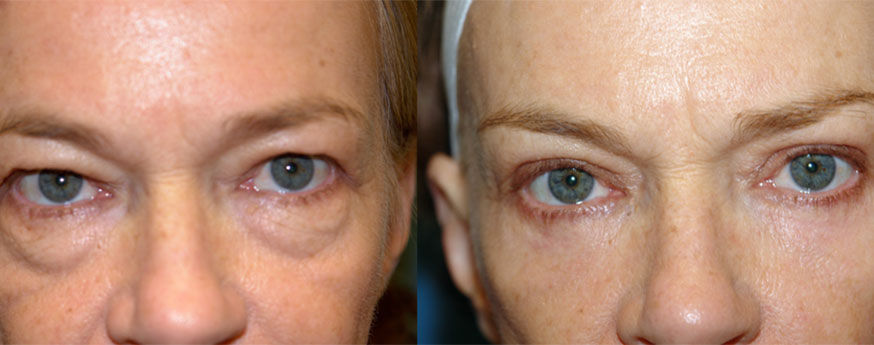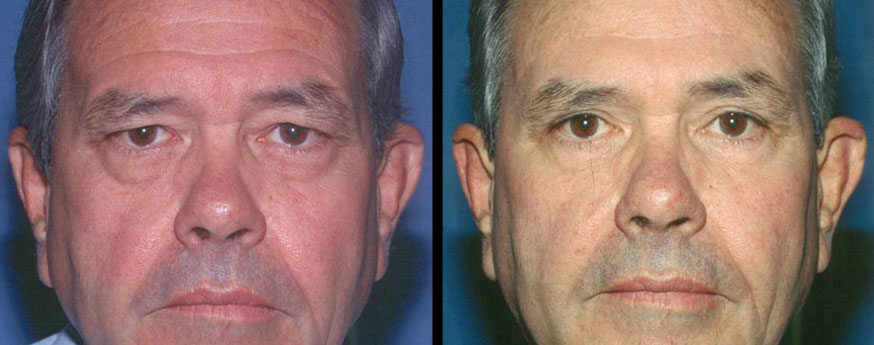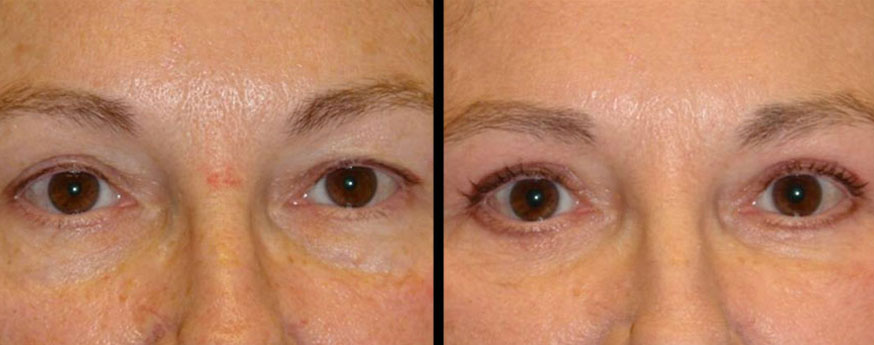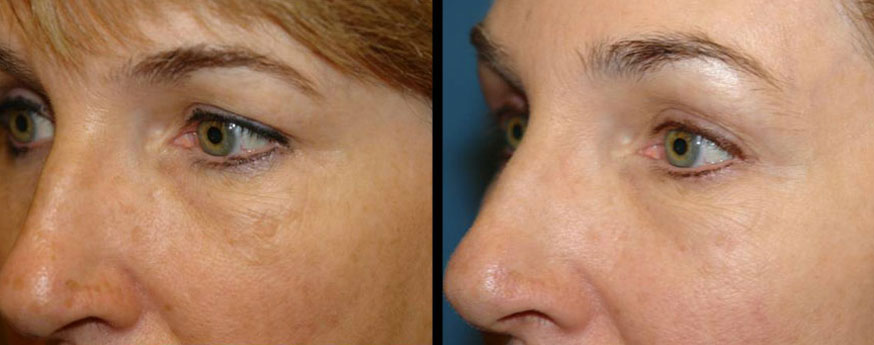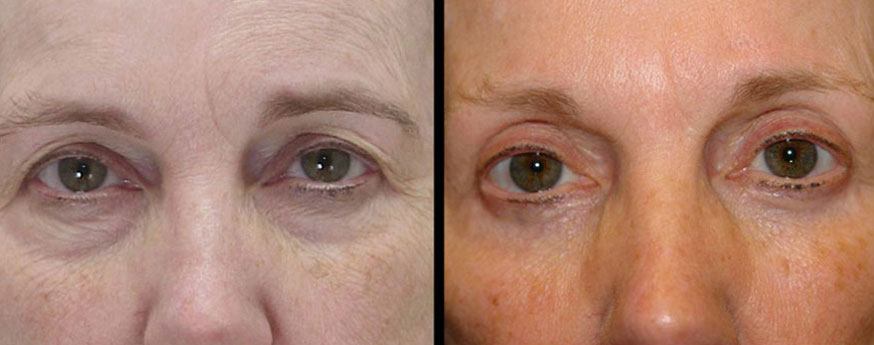Blepharoplasty, commonly known as eyelid surgery, is a cosmetic procedure aimed at rejuvenating the appearance of the eyelids. It involves removing excess skin, fat, and muscle from the upper and/or lower eyelids to reduce puffiness, sagging, and wrinkles. McCollough Plastic Surgery offers blepharoplasty in Gulf Shores to correct signs of aging and other concerns related to the eyelids.
Types of Blepharoplasty (Eyelid Surgery)
Upper Lid Surgery
Upper lid surgery is usually done at the same time as the lower lid surgery but either can be done as an isolated procedure. Upper and lower eyelid plastic surgery may be done with or without a facelift, brow lift, or other surgery. In the upper lid blepharoplasty, a determination is made about the excess or overlapping skin which frequently obliterates the natural crease above the lashes and in some cases interferes with a person’s vision. After the area has been anesthetized, the excess skin and fat are removed and the incision sites are closed with delicate sutures.
No-Scar Lower Lid Surgery
In some patients, the fatty bulges in the lower lid can be removed without making an incision in the skin. The incision is made behind the lower lid, thereby eliminating a visible scar. It is not possible to remove loose skin or sagging wrinkles with this method, but skin resurfacing (laser, peeling, or dermabrasion) can be performed at the same time to minimize many of the fine wrinkles. We will discuss this option with you during your consultation if we feel it might be an appropriate alternative in your case.
Classical Lower Lid Surgery
The lower lid procedure may also be performed by making an incision in the skin below the lower lashes at a level determined by the surgeon and elevating the skin so that the fatty pouches or “hernias” can be identified. Once fat is removed the excess skin is trimmed. Small delicate absorbable sutures are used to close the lower lid incisions. When loose skin needs to be removed, it is necessary to make the incision on the outside of the lid.

The Other “Bulge”…
Blepharoplasty in Gulf Shores is designed to correct conditions found within the confines of the bony rims of the eye socket. Many people ask if lower lid surgery removes or improves the swollen, puffy areas that sometimes develop beneath the lower lid and over the cheek bones. The answer is no. These bulges are thought to be caused by uncontrolled fluid accumulation in the tissues. They are, in essence, “bags of water.” Direct excision may remove these unwanted tissues, but is not indicated unless they become quite large; the resultant scar may be imperceptible, but often requires dermabrasion at a later time.
Blepharoplasty
Before & Afters
*Each patient is unique, and individual results may vary.
Patient Testimonials
”If I could give more than five stars, I would!! Dr. Brently Taylor is a phenomenal surgeon! He was well-educated and what was going on in my case! He made me feel reassured and confident of my outcome! He delivered just that! The overall staff from nurses to the receptionist are top notch!
-K.B.
The McCollough Classification System for Blepharoplasty
Dr. McCollough has also developed a scientific system to address sagging and bulging skin around the eye regions. The following classifications are designed to provide guidance for patients and surgeons considering plastic surgery of the upper and lower eyelids. Keep in mind that there are four eyelids: two uppers and two lowers.
Stage I (The Thirty-Something Eyelid Lift)
The Stage I eyelid surgery is for early sags and bulges of the eyelids. When little – or no – loose skin is present, lower eyelid bulges (caused by protruding fat) can often be removed from behind the lower eyelid, avoiding external incisions and scars. If excessive skin is beginning to develop in the upper lids, only overlapping portions are removed.
Stage II (The Forty-Something Eyelid Lift)
The Stage II eyelid surgery is for moderate amounts of loose or hanging skin and bulging fat, creating the appearance of “dark circles” under eyes and hooding of the upper eyelids.
Stage III (The Fifty-Something Eyelid Lift)
The Stage III surgery is for treating excessive upper lid skin that droops to the level of the eye lashes, eliminating the natural crease and for lower lid skin and fat that create the appearance of a “tired” look.
Stage IV (The Sixty-Plus Eyelid Lift)
The Stage IV eyelid surgery is for extreme drooping of upper and lower eyelid skin and enlarging fat pockets in both the upper and lower lid regions. In such cases, upper eyelid skin begins to push the eyelashes downward (or overlap them), blocking the individual’s field of vision and causing the eyes to feel “tired” toward day’s end.
Insurance Coverage for Functional Surgery
Insurance may not cover surgical fees and hospitalization expenses for cosmetic surgery. However, in patients who have extreme amounts of overhanging tissues, producing “hooding,” we may request a consultation from an eye specialist. If the examination demonstrates any visual impairment from such a problem, a portion of the fees for “functional” upper lid surgery may be covered by medical insurance, but, in our experience, it is getting more and more difficult to convince insurance companies to participate in covering costs.
We have yet to encounter a case where excess skin and fat in the lower lid impaired one’s vision; however, if we need to do blepharoplasty in Gulf Shores to support a lax or drooping lower lid, insurance may pay some of the costs for this portion of the lower lid operation.
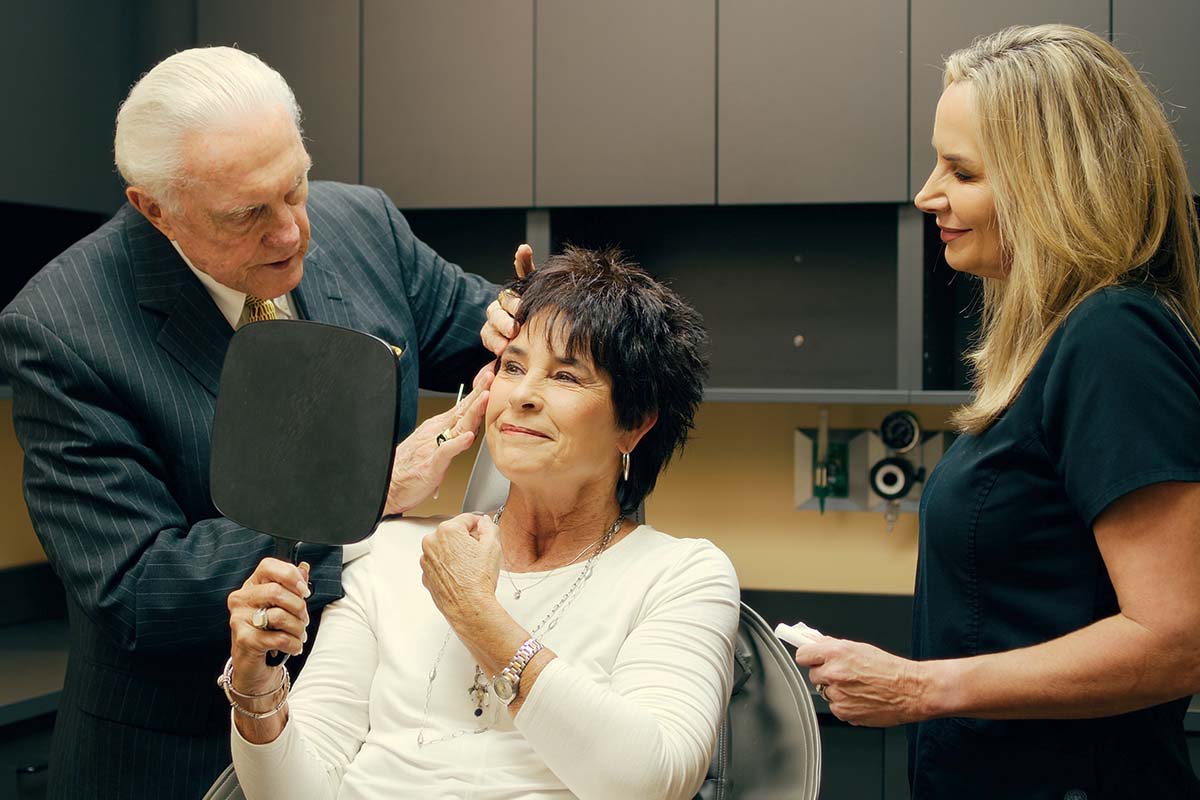
The Recovery Process After Blepharoplasty
Because the skin at the outer corners of the eye is thicker than the skin adjacent to the lashes, it takes a little longer for that area to soften and flatten after surgery. Sometimes, cortisone injections speed the process along. With the passage of time, the incision lines of the upper and lower lids are usually camouflaged. As a rule, eyelid procedures are associated with minor disabilities and allow one to return to routine living after a few days using cosmetics and sunglasses. Most patients tell us that there is little or no pain in the postoperative period.
Each operation is followed by varying degrees of swelling and/or discoloration, most of which usually subsides within 7-10 days. By this time, too, the scars can be camouflaged by makeup; these scars gradually blend in with the surrounding skin. After several months have passed, in most cases, the scars become perceptible only upon close scrutiny. When wrinkling of the lower lid is pronounced, we frequently recommend skin resurfacing to cause further tightening of the skin and improve fine wrinkles or “crow’s feet.”
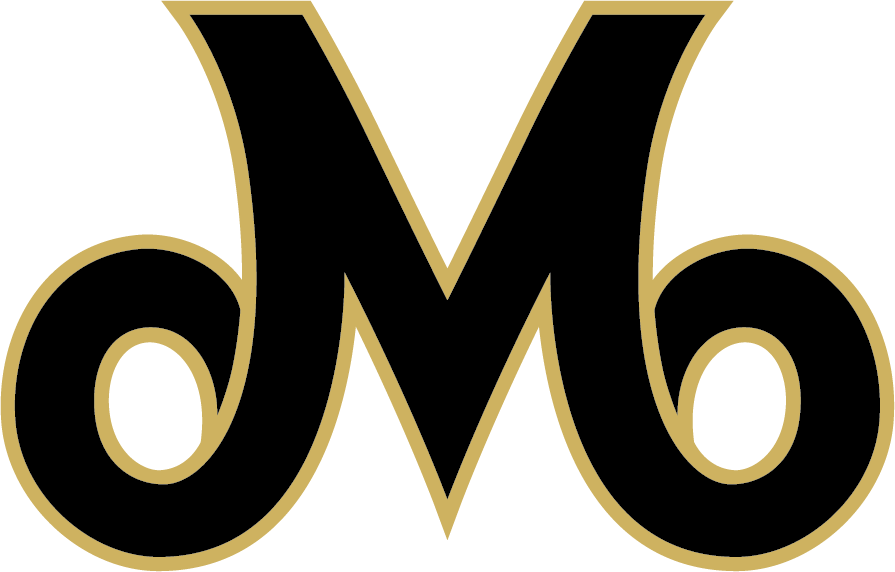
Schedule Your Consultation
Dr. McCollough is a double board-certified facial plastic surgeon renowned for his expertise in enhancing not only your appearance but your overall quality of life. Dr. Taylor also performs eyelid surgery. At McCollough Plastic Surgery, located in the picturesque Craft Farms near Orange Beach, Alabama, you can initiate your journey to a rejuvenated you by scheduling your consultation for blepharoplasty in Gulf Shores today.



